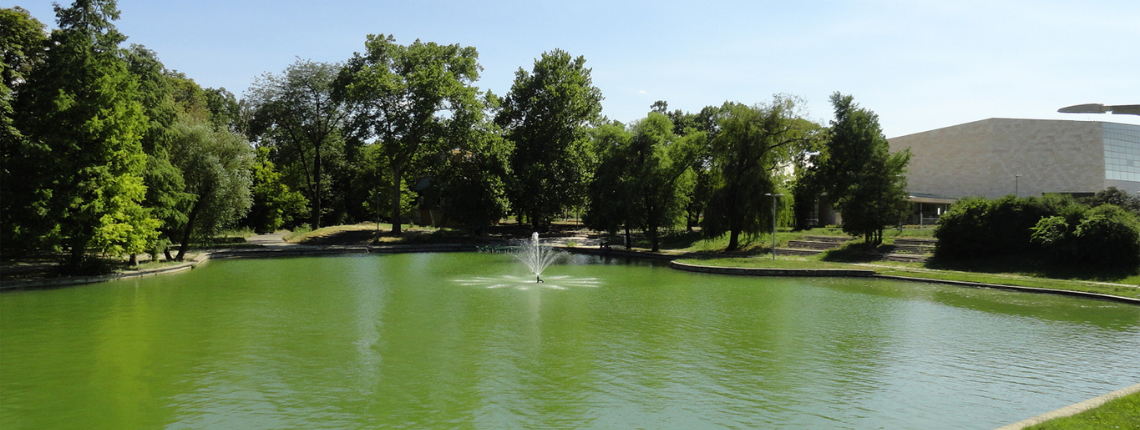Balokány District is found in South-East Pécs, between Siklósi út, Zsolnay Vilmos út, Basamalom and Tüskésréti út. The district (the name of which perhaps comes from Turkish, and means “the han of Balu”, “the han of Baali”, maybe “Balikhane”—i.e. the estate of Balu, the merchant lodging of Baali, or “a swampy place with fish”) has its own grove and lake. The northern part of the district has changed dynamically recently, as two significant development projects were carried out here as part of the Pécs2010 European Capital of Culture programme. Close to each other, the Kodály Centre and the Regional Library and Knowledge Centre of Southern Transdanubia were built south of Zsolnay Vilmos utca.
The origin and etymology of the name Balokány seemed to be unclear for a long time. Based on the data relevant to the development of Balokány in Pécs, it is certain that the name originally meant a swampy field or lake. The name Balokány originates from the Croatian (Bosnian) population in Pécs too. The Turkish origin of the name—according to which it would mean the han of Balu or the inn of Balu—can not be proven by any linguistic or other facts.
Originally, Balokány was a huge clay pit stretching southward. It provided the clay to the brick makers and population of the city, probably going back as early as the Ottoman occupation. After the layer of clay confining the groundwater had been extracted, water sources sprung up at the bottom of the pit. At that time a new clay pit was started next to the city, on the eastern side. in 1746, the city council ordered Ballukanya to be cleaned and turned into a meadow, so they started doing groundwork and cleaning the ditches there. So the water coming from the five springs of the clay pit were collected in an earth-banked pool, and the surplus was drained in a ditch. The legendary Pepita was renovated in 2013 with EU funding, thanks to which Balokány Grove in Pécs is now an increasingly popular event site of Pécs.

